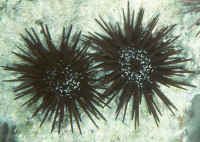Project Summary
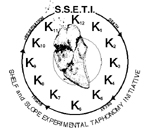
The Shelf & Slope Experimental Taphonomy Initiative
A long-term experiment on the fate of organism's remains at the sediment-water interface
Experimental
Design
Mollusk shells, crabs, urchins, wood, and brachiopods were placed in mesh bags strung on a PVC rod and placed on the sea floor. We also tethered gastropod shells to PVC rods using monofilament line to examinine the role of hermit crab occupation and predation on shells at the sediment water interface. Lastly, we placed a replicate set of mollusk shells on the bottom not contained in mesh or tethered so that we could track natural burial rates and to evaluate any effects of the mesh bags on shell taphonomy.
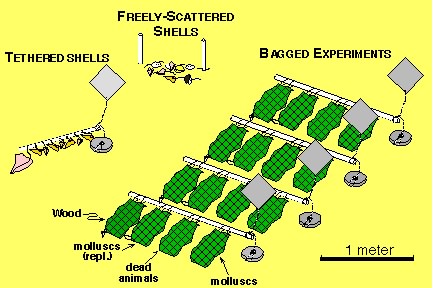
Collection History
SSETI has retrieved bag arrays frequently over the course of this experiment
AA Transect Bahamas: Deployed in 1993
Collected 1994, 1995, 1999, 2001, 2006
BA Transect Bahamas: Deployed in 1994
Collected 1995, 1996, 1999, 2001, 2006
Gulf of Mexico: Deployed in 1993
Collected 1995, 2001,
[S. Texas Shelf deployed in 1995, collected 2001]
Mesh Bag Experiments
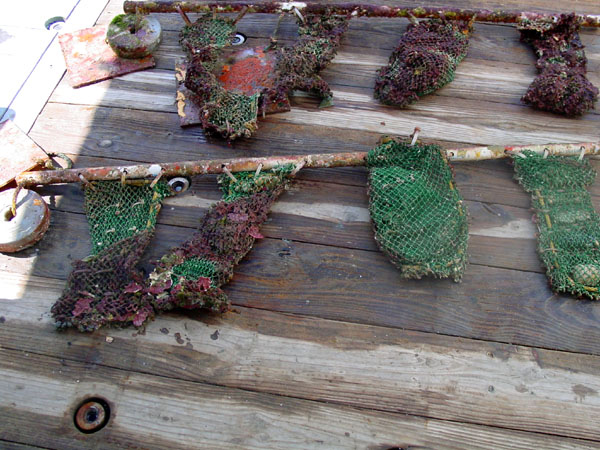
Poles retrieved from 72m on a hardground at the East Flower Garden Banks Marine Sanctuary after 8 years on the bottom
Tethered Shell Experiments
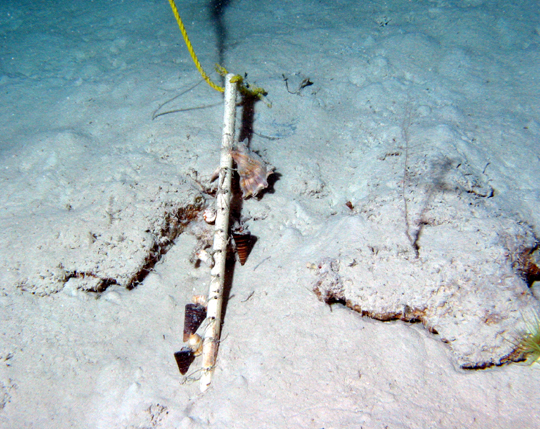
Twelve gastropods are tethered to PVC rod to examine the effects of hermit crab occupation in the shells and subsequent predation/mistaken predation. These experiments also serve as a comparison to bagged shells for affects of the bags on taphonomic condition
Taphonomic Analysis
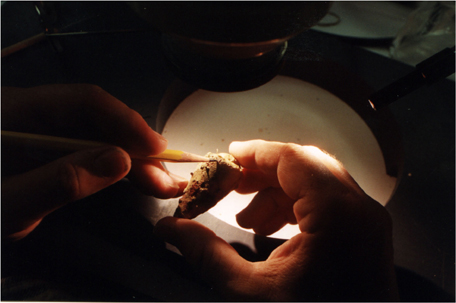
Features Quantified on each specimen:1. Bioerosion
2. Encrustation
(identification and % cover)
3. Dissolution
4. Loss of original color/acquisition of staining
5. Fragmentation
6. Disarticulation
Mesh Bag Contents
-
Wood Bag
- Black walnuts
- Oak (old & young)
-
magnolia
- cedar
- pine cone
- parana pine
- palm ( not always included)
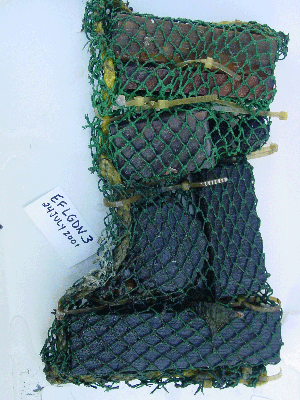
- 5 articulated Mytilus edulus
- 5 Codakia orbicularis
- 5 Arctica islandica or Mercenaria mercenaria
- 5 Strombus luhuanus
- 5 Telescopium telescopium (or Rhinoclavus sp. or Turritella ungulina
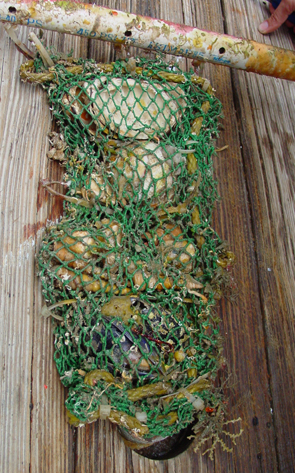
Crab/Urchin bag
- 2 blue crabs (Callinectes sapidus), frozen
- 2 long spined sea urchins (Arbacia or Echinometra sp)
- 1 pencil urchin (Heterocentrotus sp.)
